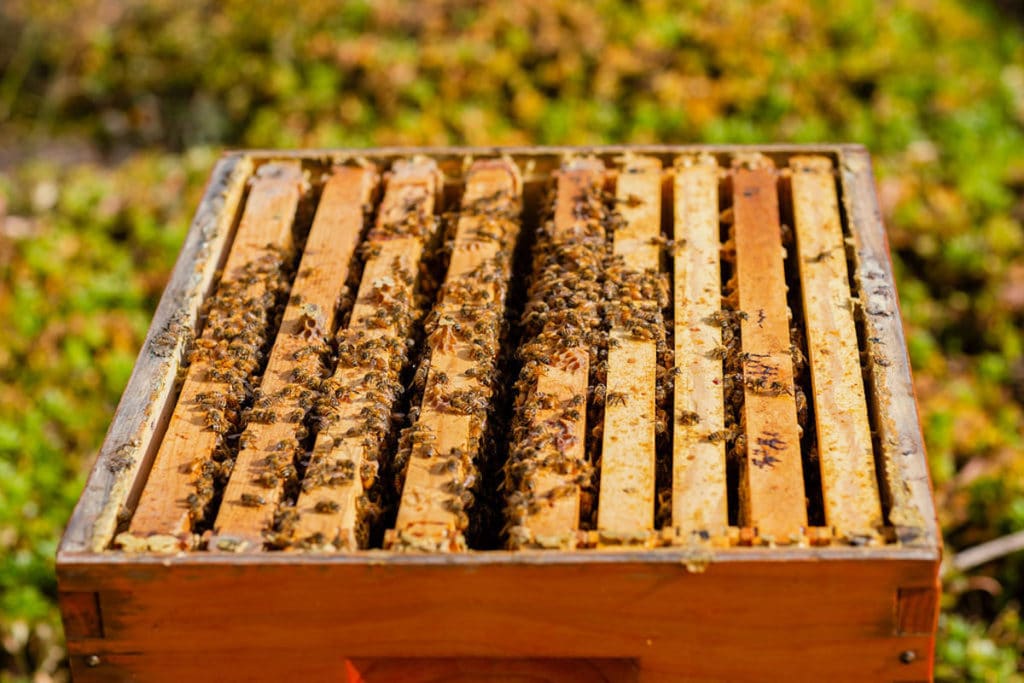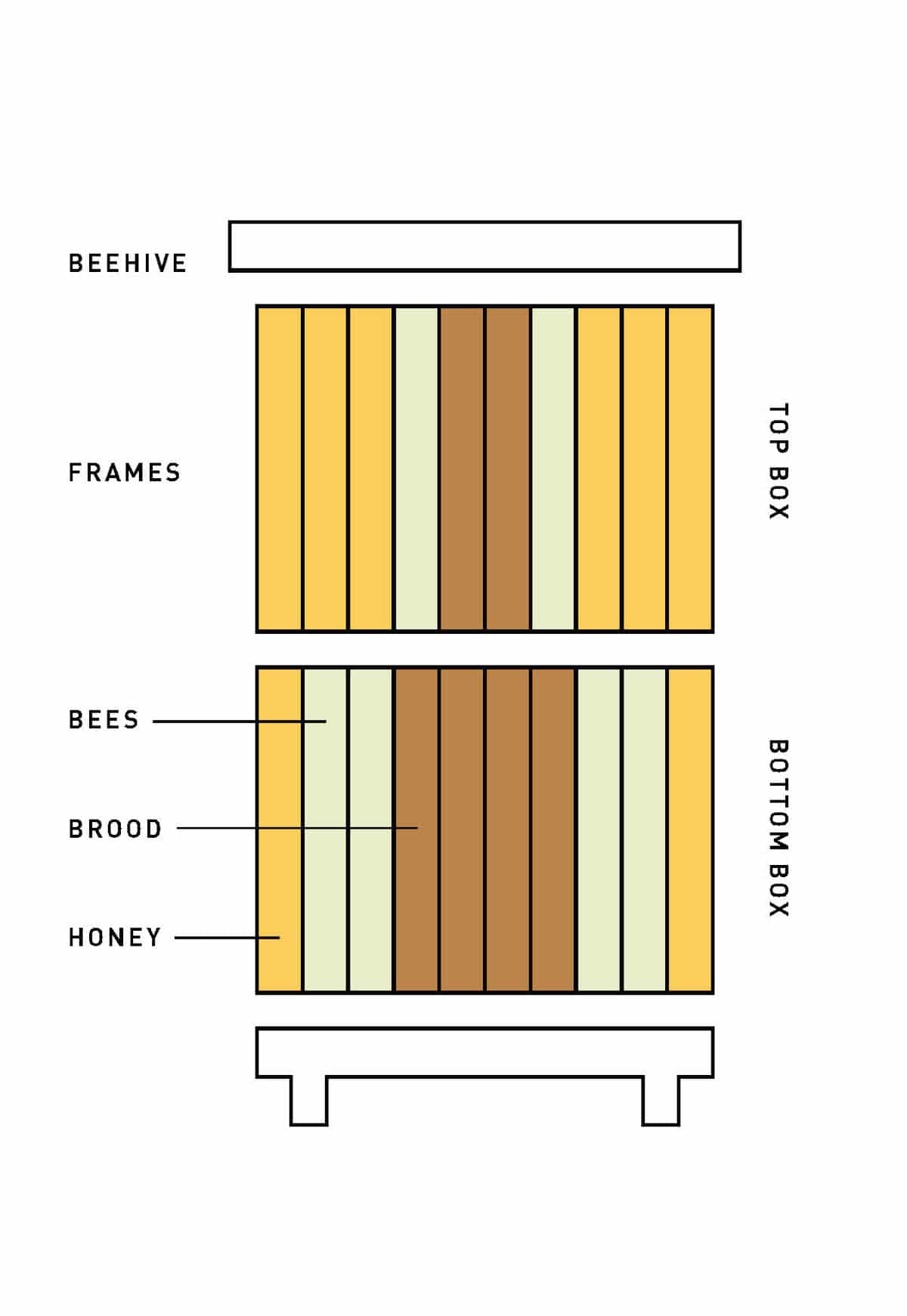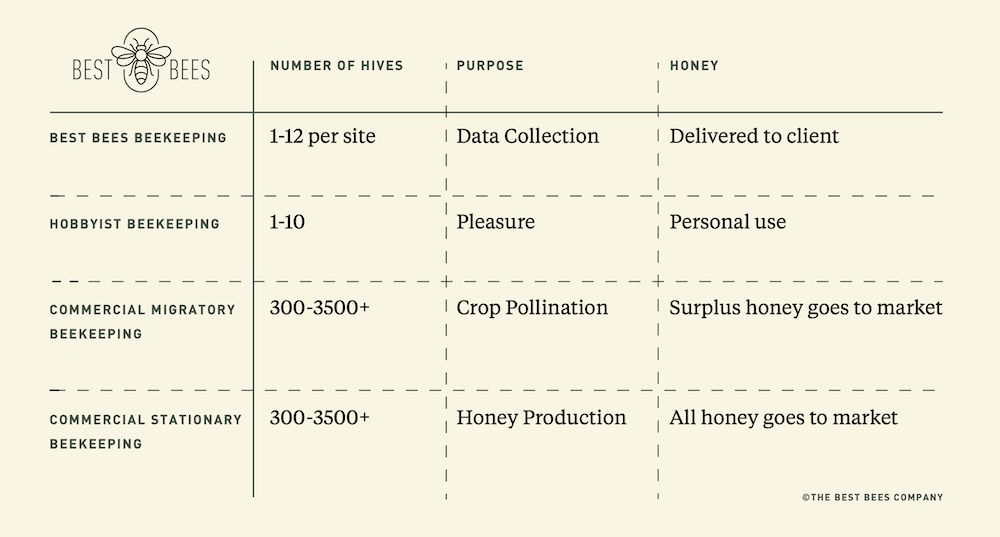For millennia, traditional beekeepers tended hives, passing down the craft of beekeeping from generation to generation. In recent years, colony collapse disorder struck and changed the course of beekeeping in America. Hives around the world experienced die-off in unprecedented numbers. Concerned scientists like our Founding Partner, Dr. Noah Wilson-Rich, stepped in and began to seriously study the problem. Over the past 10 years, we’ve gathered just how complex improving bee health is. There is no one cause of colony collapse disorder, and there is no one, silver-bullet solution. Instead, we need to deal with a mix of weather, nourishment, water, pollution, pesticides, herbicides, and pervasive pathogens, like Varroa mites. These conditions vary by neighborhood, city and region, as do the effectiveness of solutions. To protect and nurture bees, we can no longer rely on craft alone; we need the power of science to find solutions and apply them, precisely, at the hive level.
This is Where Data Comes In
At The Best Bees Company, we’re advancing the understanding of bee health by gathering information from over 1,000 hives, in a wide variety of geographic conditions across the country. Our beekeepers’ record estimates on the number of bees, size of brood nests, weight of honey, and presence of pathogens at every visit, for every hive they service. From this massive database (the largest in the U.S) we’ve established benchmarks for colony health by time of year and by geography. Reading this information through a variety of lenses, we’ve been able to see patterns emerge that help us to better understand which factors help bees thrive and those that are harmful to their health.
With data in hand, we can devise solutions to specific problems, test the solutions, and use the data from those sample hives to prove with confidence which are most effective. It was data that led us to discover the harm caused by Varroa mites, data that proved the effectiveness of formic acid as a treatment for them.
While data collection is working at the national level to change the best practices of beekeeping, it’s also working at the hive level. When our beekeepers record their observations and compare data on your hive to past visits and to local benchmarks, they’re able to make scientifically informed decisions about actions needed to improve the health of your bees.
With data from over 40,000 discrete bee service visits, we’re proud of the contribution we’ve made to advancing the world’s knowledge of bee health. But there’s still so much more to learn! At Best Bees, we’re not only collecting and interpreting data ourselves, we’re working with leading scientific organizations to use that data to dig even deeper into bee health, build predictive models, develop and test new hive structures, harness technology to build “smart” hives, and create automated systems for precise treatment delivery. Over the course of this year and next, we expect to have exciting news to share with you—all made possible from the data we collect from hives like yours.







